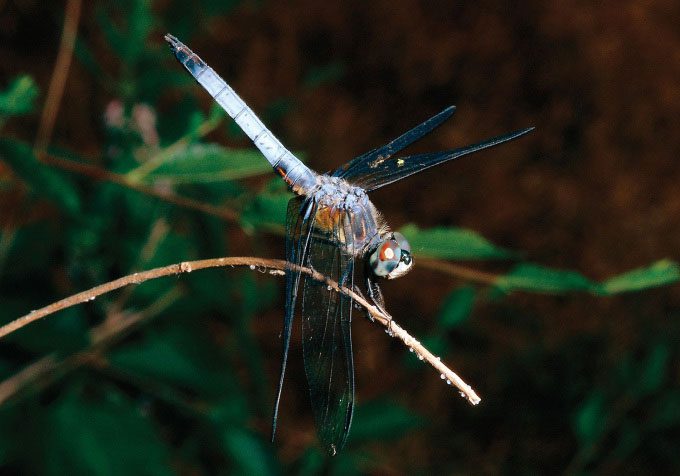Dragonflies are the best hunters when considering their success rate, but pythons could claim this title based on efficiency.
The clearest way to address the question of hunting ability is to consider the success rate of capturing prey, or the number of times a predator secures a meal relative to the total attempts made. According to this metric, animals that humans typically think of when it comes to hunting, such as lions, tigers, or wolves, are not the most successful. Lions successfully take down their prey about 30% of the time, while tigers only manage a success rate of 10%.

Dragonflies have excellent vision and flying abilities. (Photo: Index Open).
The title of the most successful hunter by success rate goes to a creature few would expect: the dragonfly. This group of insects, along with their relatives, the horseflies, boasts a success rate of up to 97% in capturing prey. They can eat hundreds of mosquitoes in a single day.
This success is partly due to their extraordinary vision. Dragonflies and their relatives possess compound eyes, providing nearly 360-degree vision. Their brains can process sensory information extremely quickly, allowing them to predict the movement of their prey. Their front and back wings can move independently, enabling dragonflies to fly remarkably well, even backward.
However, there are alternative ways to evaluate hunting ability, according to Mark Belk, an evolutionary ecologist at Brigham Young University. Typically, predators are classified into two types: those that actively chase and attack prey and those that lie in wait, patiently waiting for the right moment. In terms of efficiency, a large python could claim the title of best predator.
“A large python can remain motionless and wait. Eventually, when the right animal passes by, it will strike and kill. For large pythons, this might only happen two or three times a year,” Belk stated.
Another way to address the question of the best predator is to consider skill. If that’s the case, the prairie wolf might be the winner, according to Jason Fisher, a wildlife biologist at Victoria University. They can hunt alone or in groups and prey on everything from young moose to mice. Their adaptability allows them to thrive in almost all habitats, including urban environments. Fisher noted that prairie wolves excel at making use of everything within reach.
Moreover, some creatures have such innovative hunting methods that they could be considered special winners. The archerfish, a tropical fish living in Southeast Asian mangroves, can calculate the distance between itself and insects perched on leaves, then take them down with a powerful water jet. At distances of 65 cm or less, they aim with nearly 100% accuracy. The octopus also succeeds similarly in hunting outside its natural habitat. Besides its incredible camouflage abilities, this mollusk can briefly venture onto land to pursue prey.

The coyote has a peculiar appearance and hunting strategy. (Photo: Dennis Jacobsen).
Determining which animal is the worst hunter may be even harder to answer. By definition, all hunting species are successful because they can sustain themselves as a population. However, in terms of peculiarity, Fisher would award this title to the coyote, an animal considered a hunter but also scavenges when food is scarce.
Fisher mentioned that the coyote has a strange appearance and an equally bizarre hunting strategy. They hunt by charging at their prey and startling it with loud howls and other noises. “For them, if it’s effective, great; if not, it’s just bad luck,” Fisher explained.


















































